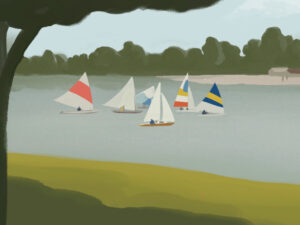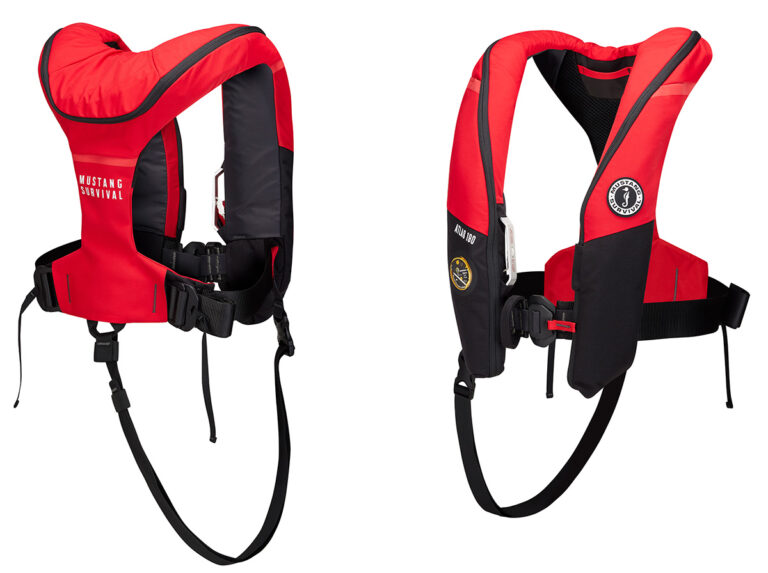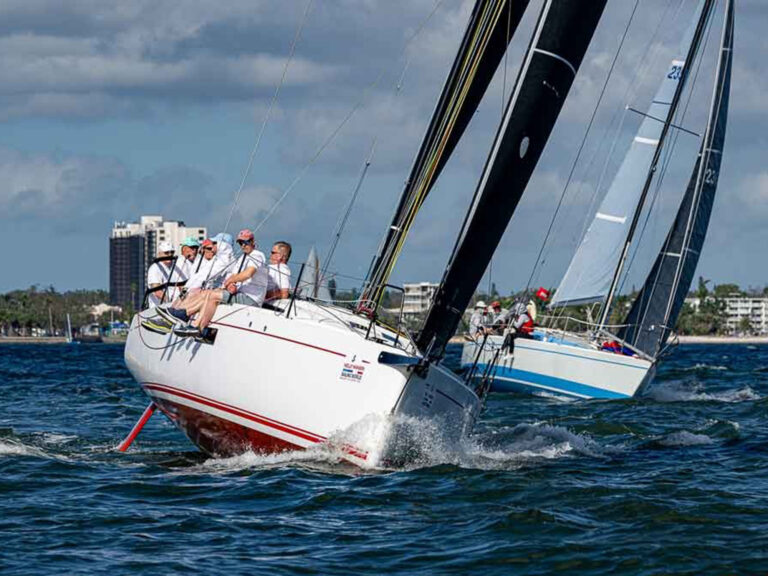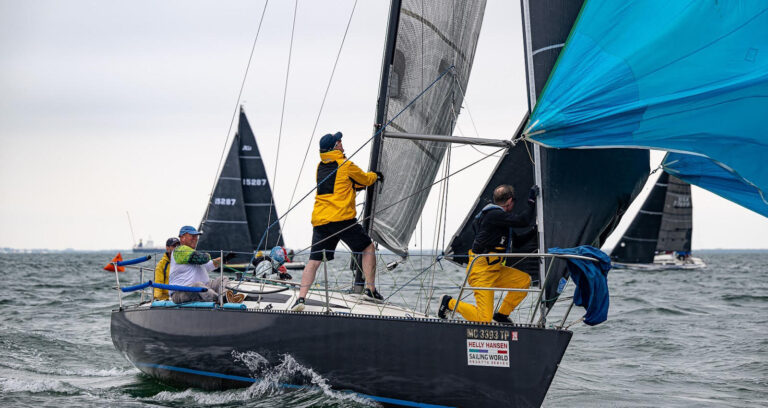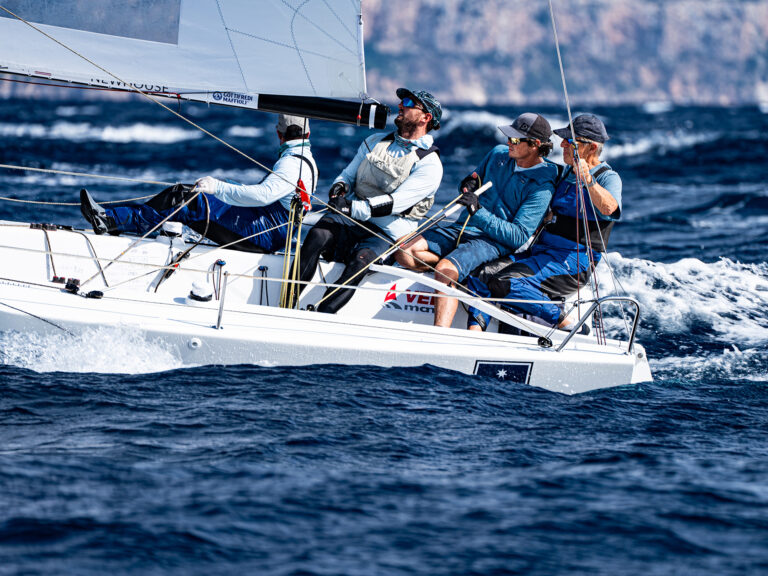Brad Read looks out his office window across Newport Harbor’s Brenton Cove, observing how the puffs fan across the racecourse that’s spitting distance from his public-sailing operation’s docks. Small pink and green buoys he set earlier outline the miniature racecourse. Alongside him at his desk is his 37-inch remote-controlled Dragon Flite 95 racing sailboat, Hatey-Eight, a nod to the Beantown puck-slinger David Pastrnak. The color scheme, of course, is black and gold.
Outside Sail Newport’s headquarters, competitors arrive one by one, raceboats in hand, mylar sails flapping in the breeze. They are the co-founders of Sail Newport’s Thumb Yachting Guild: race programs director Nick Ewenson, pro sailor Anthony Kotoun and round-the-world storyteller Amory Ross. There’s Henry DiPietro, the flock’s shepherd, and his wife, Janet, the scorekeeper. They too have their colorful and decorated vessels in hand. Others eventually straggle in. Today there might be six sailors. Next week there will be 10, and then 15, 20—and so the guild’s roster grows week by week, almost day by day.
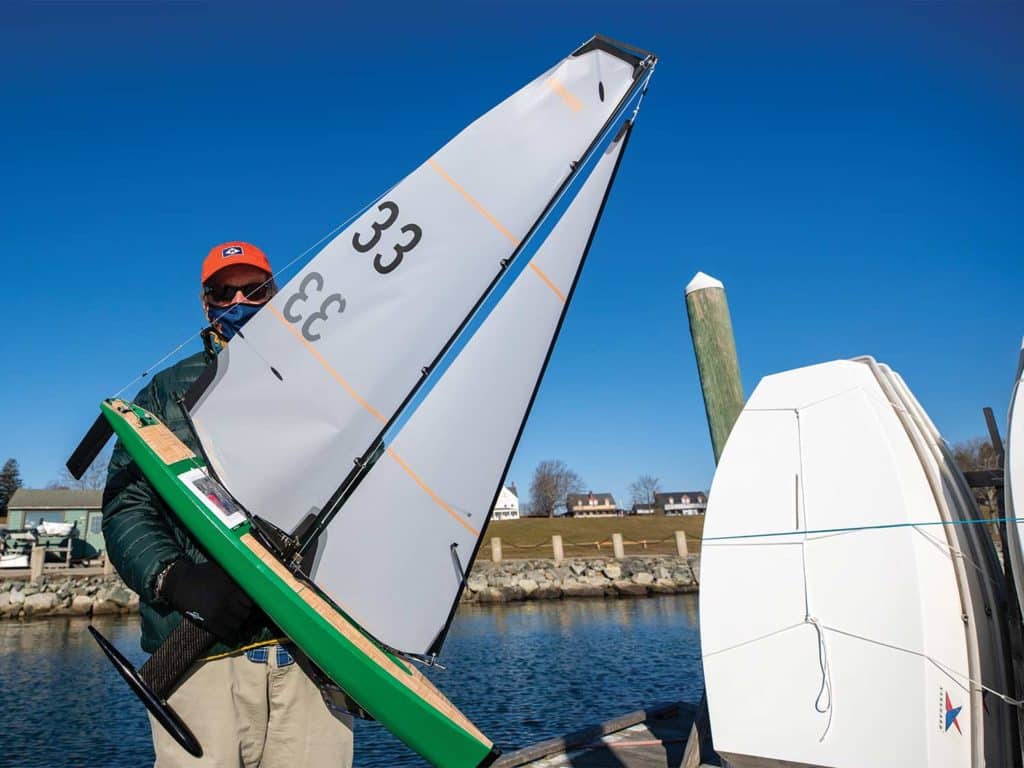
It’s now less than a year since the postman first delivered these remote-controlled yachts to Read’s office, and the unofficial fleet’s membership has blossomed to nearly 70. He has never seen a one-design fleet grow so rapidly, but why is obvious. “It’s been an amazing study in fleet building,” Read says. “The product is good, it’s fairly inexpensive, and it has just taken off.”
It was Ewenson’s idea to start a remote-controlled racing fleet as a COVID-19 lockdown sailing fix last spring. The Dragon Flite 95, designed by John Tushingham and Buzz Coleman, and built by Joysway Hobby International, checked all the boxes. National Sailing Hall of Famer Bob Johnstone, who’d started fleets in South Carolina and elsewhere, helped kick-start the action with a shipment of 20 boats that arrived in July of last year—all essentially spoken for. Soon they were racing off Sail Newport and across the harbor at New York YC, drawing the curiosity and attention of the city by the sea’s sailing elite. When most of the 11th Hour Racing team crew—in town training on their IMOCA 60—got in on the fun, it went up another notch.
Consider the Newport fleet another chapter in the Dragon Flite 95′s amazing success story. It’s all thanks to North American distributor Chuck LeMahieu, who started selling them five years ago. In April, he moved into a 2,000-square-foot fulfillment warehouse in Texas to meet the US demand for what is considered the world’s fastest-growing one-design class. “I know it sounds crazy, but I knew this is what was going to happen,” LeMahieu says. “Traditionally, the radio-sailing target market has been the hobby enthusiast, and the boats that were out there were not appealing to the big-boat racing crowd for various reasons [cost and complexity]. I’ve been doing this for 30 years and never saw anything like the Dragon Flite. That’s why I threw every penny I had to get it going.”
Since 2015, LeMahieu has sold 6,000 of these $500 battery-powered yachts, lately to household names like Paul Cayard, Ed Baird, Bruce Farr, Taylor Canfield and, yes, Read’s brother, Ken, who is now a member of the guild.
“It’s fun to race sailboats, and that’s what these capture,” LeMahieu adds. “We’re appealing to the hardcore racing guys because the good guys are also accomplished bigger-boat sailors. One of the cool things that has happened at Lakewood YC in Texas, for example, is they got some of the guys that used to just sit at the bar because they couldn’t sail anymore. It’s not just toy boats—it’s another fun sailing activity for the club.”
Chicago YC has hundreds of them, and California YC, in Marina del Rey, recently bought 75, to list but a few other clubs ordering fleets. There are already big fleets in Florida and Texas, but the new hotspots, LeMahieu says, are the Northeast, California, Oregon and Wisconsin. It’s no wonder his friends call him the Johnny Appleseed of RC racing.
DiPietro, who took charge of organizing the guild’s racing, says its first regatta was in late July, and with racing three nights a week, they got in more than 130 races, a lot of those in front of the esteemed New York YC. “There were people down on the lawn having drinks. It was great entertainment for them and a good draw for the members. And, of course, liquor sales went up every day we were there.”
Guild racing has continued through the fall and winter on Saturdays and Sundays, no matter how frigid or how many layers are required, but Newport’s fleet is at a tipping point of sorts. What was once informal is getting serious. Bigger numbers, stronger interest and varying skill levels need to be addressed. There’s also a lot of rubbing in the racing, and an honor-system approach to the rules that works for some but not others.
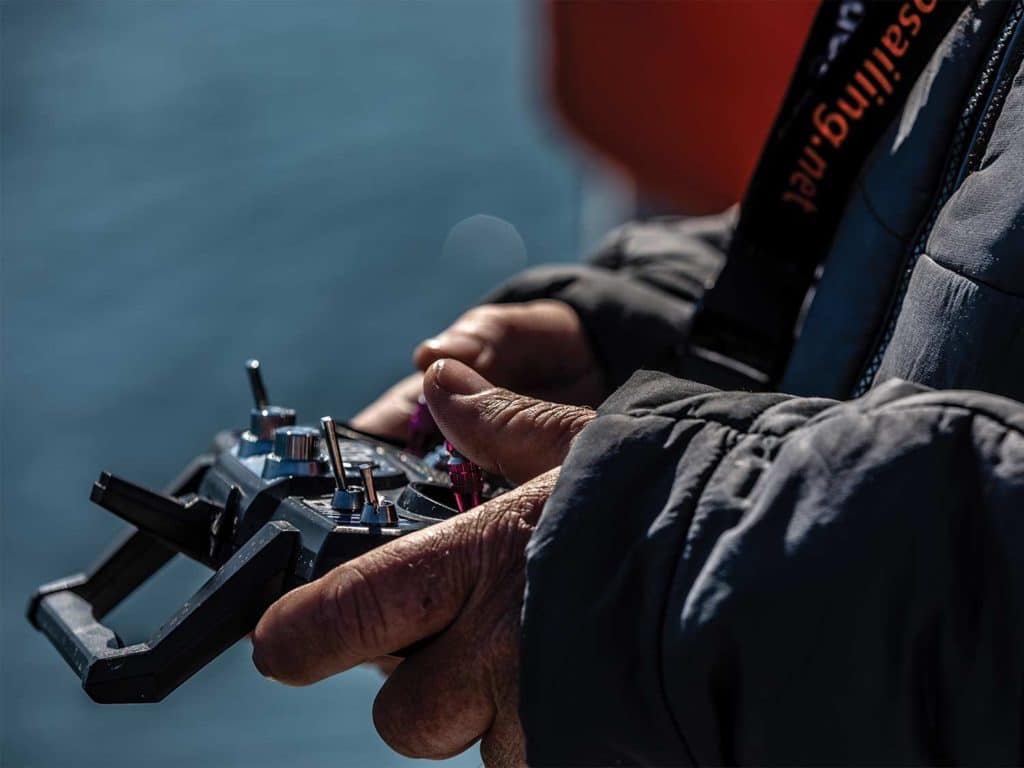
“We do have a lot of world-class sailors, but even for them the boats can be humbling,” DiPietro says. “Some over-tinker; some struggle with depth perception. I’m an OK sailor but not an OK racer, and that’s what seems to make the difference.”
Read’s observation is that good sailors make good RC racers because the same key principles apply: fleet tactics, reading the wind and knowing the rules. The simple adjustments of the Dragon Flite, he says, allow you to keep your hands out of the boat once it’s tuned right. “What I’ve found is that these little boats supply so much learning, especially the tactics, and the laughs-per-dollar quotient is off the charts. Your pride does eventually get beat up.”
And he’s speaking as well for his brother, Ken, the round-the-world racer, America’s Cupper and big cheese at North Sails, who showed up for his first day of racing in early March and won a race or two after only a few minutes on the joysticks. The streak didn’t last long.
While the guild has plenty of young’uns and now more women, Read’s wife still calls his obsession “old-man sailing,” but he argues it’s more than that. “Without it this winter, there would have been this huge void for me,” Read says. His winter jam is normally hockey and coaching, but with COVID-19, there was none of that. “This was a way to be outside and safely sailing with friends. It was therapeutic.”


